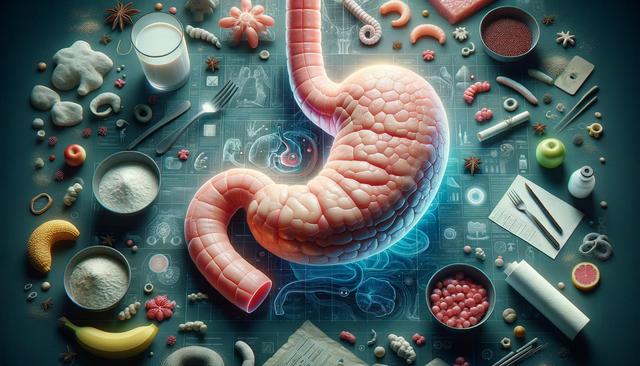Understanding Stomach Cancer and Its Symptoms
Stomach cancer, also known as gastric cancer, develops when malignant cells form in the lining of the stomach. It can progress slowly and might not show clear signs in its early stages, which makes early detection challenging. Recognizing the common Stomach Cancer Symptoms is crucial for timely diagnosis. These may include:
- Persistent stomach pain or discomfort
- Unexplained weight loss
- Nausea or vomiting, sometimes with blood
- Feeling full after eating small amounts
- Chronic indigestion or heartburn
If any of these symptoms persist, it’s important to consult a healthcare professional. While these signs can also be linked to less serious conditions, they warrant attention, especially if multiple symptoms occur together. Early diagnosis significantly improves the potential for stomach cancer treatment success.
Diagnostic Procedures and Staging
Once symptoms are identified, a series of diagnostic tests help confirm the presence of stomach cancer. These typically include endoscopy, biopsy, imaging tests such as CT scans, and sometimes laparoscopy. These procedures not only detect cancer but also determine its stage—how far it has spread. Staging plays a crucial role in shaping the treatment plan. Depending on the stage, treatment may range from localized surgical intervention to more aggressive, multi-modal approaches.
Staging usually falls into one of the following categories:
- Stage 0: Early cancer, confined to the inner stomach lining
- Stage I-II: Cancer has grown deeper but is still localized
- Stage III: Cancer has spread to nearby lymph nodes
- Stage IV: Advanced cancer spread to distant organs
Knowing the stage helps in determining whether a patient is a candidate for surgery, chemotherapy, radiation, or a combination of treatments. Understanding these stages is a valuable step in preparing for the treatment journey.
Treatment Options and Considerations
There is no single approach that fits all when it comes to treating stomach cancer. Instead, treatment plans are personalized based on the cancer’s stage, location, and a patient’s overall health. Among the most common options is surgery, which is often used when the cancer is localized and removable. In many cases, chemotherapy and radiation are also part of the treatment regimen.
Chemo treatment for stomach cancer can be used before surgery to shrink tumors or afterward to eliminate remaining cancer cells. Targeted therapies and immunotherapies are also being explored as part of advanced treatment strategies. These methods aim to interfere with cancer growth mechanisms or boost the immune system’s ability to fight off the disease.
While no single method is universally accepted as the best stomach cancer treatment, a multi-disciplinary approach involving oncologists, surgeons, and dietitians has shown promising outcomes. The effectiveness and side effects of each treatment option vary, so patients are encouraged to ask detailed questions and consider second opinions when necessary.
Managing Side Effects and Recovery
Stomach cancer treatments can significantly impact a patient’s physical and emotional well-being. Common side effects of chemotherapy include fatigue, nausea, and a weakened immune system. Surgery may involve partial or total removal of the stomach, which requires significant dietary adjustments. Recovery and long-term health management often involve multiple aspects of care.
Steps to support recovery include:
- Working with a nutritionist to develop a suitable eating plan
- Engaging in moderate physical activity as advised by a healthcare provider
- Participating in mental health counseling or support groups
- Attending regular follow-up appointments and screenings
Support systems, including family, friends, and healthcare providers, play a vital role in helping patients adjust to life during and after treatment. Clear communication with your medical team can help manage expectations and improve quality of life throughout the recovery process.
Looking Ahead: Prognosis and Continued Research
While the question “what is the cure for stomach cancer” remains complex, advancements in medical research are steadily improving outcomes. Cure rates depend on various factors, including the cancer’s stage at diagnosis, the patient’s age, and overall health. For some, especially those diagnosed at an early stage, complete remission is possible after a combination of surgery and adjunct therapies.
Ongoing clinical trials and research initiatives continue to explore innovative approaches, such as personalized medicine and targeted therapies. These developments offer hope for more effective and less invasive treatment methods. Staying informed about new treatment options and discussing them with your healthcare provider can be an empowering part of your care strategy.
Ultimately, navigating stomach cancer involves a holistic approach that combines medical treatment with lifestyle adjustments and emotional support. By staying proactive and informed, patients increase their chances of achieving optimal outcomes and maintaining a good quality of life.
Conclusion: Empowering Patients Through Knowledge
Facing a stomach cancer diagnosis can be daunting, but understanding the available treatment options, potential side effects, and recovery strategies provides a clearer path forward. Recognizing Stomach Cancer Symptoms early, exploring personalized treatment plans like chemo treatment for stomach cancer, and staying informed about evolving medical research are all important steps in navigating this journey. While there may not be a single answer to what is the cure for stomach cancer, a combination of early detection, comprehensive care, and ongoing support can significantly increase the likelihood of stomach cancer treatment success. Patients and caregivers are encouraged to seek professional guidance and utilize available resources to make empowered decisions at every stage.













